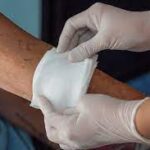
Practical Tips for Caring for Surgical Wounds at Home
October 3, 2025
Exploring the Connection Between Vascular Insufficiency and Aging
October 3, 2025A sports physical, also known as a pre-participation physical evaluation (PPE), is a common step for athletes before they begin a new sport or season. These evaluations help determine if an individual is healthy enough to participate safely in their chosen activity. The process involves a primary care provider reviewing an athlete’s medical history and conducting a physical examination. This standard checkup can sometimes reveal underlying health conditions that were previously unknown.
What Are Sports Physicals?
Sports physicals are designed to screen for health issues that might put an athlete at risk of injury or illness during physical activity. The evaluation consists of two main parts: a medical history review and a physical exam. The medical history portion often involves a questionnaire about past illnesses, injuries, hospitalizations, and family health history. This information provides a primary care provider with a detailed picture of the athlete’s overall health.
The physical examination is a hands-on assessment. A provider typically checks an athlete’s height, weight, blood pressure, and pulse. They also examine the heart, lungs, abdomen, ears, nose, and throat. The exam includes an evaluation of the musculoskeletal system, assessing posture, strength, flexibility, and joint function for any abnormalities that could lead to injury.
What Issues Might Be Identified?
The comprehensive nature of a sports physical allows providers to identify a range of potential health concerns. While these exams are not meant to replace regular checkups, they can serve as a valuable screening tool. Discovering a condition during a PPE allows for early management and a safer return to sports.
Some conditions that might be identified include:
- Heart Conditions: Irregular heart rhythms, murmurs, or high blood pressure could indicate an underlying cardiac issue. Family history of heart problems is also a key area of review.
- Asthma: A provider might detect breathing difficulties or wheezing during the exam, which could suggest undiagnosed or poorly controlled asthma. Physical activity can often trigger asthma symptoms.
- Musculoskeletal Problems: The exam can reveal issues such as scoliosis (curvature of the spine), joint instability, or unhealed past injuries that may increase an athlete’s risk of new injuries.
- Vision or Hearing Problems: Basic checks of vision and hearing are part of the evaluation. Undetected problems in these areas can affect an athlete’s performance and safety.
These findings provide athletes and their families with the necessary information to address potential health issues. The goal is to support safe participation, not to disqualify an athlete from their sport.
What Happens Next?
If a potential health issue is found during a sports physical, a provider will recommend the next steps. This often involves a follow-up appointment for more detailed testing or evaluation. A provider might refer the athlete to a specialist, such as a cardiologist for a heart concern or an orthopedist for a bone or joint issue.
In many cases, the identified condition can be managed effectively. This may involve medication, physical therapy, or the use of protective equipment, such as braces. The provider may clear the athlete for participation with certain conditions or recommend modifications to their activity. The objective is to create a plan that allows the athlete to participate as safely as possible.
Schedule a Primary Care Visit
A sports physical is a useful screening tool for activity, but it does not replace regular medical care. Establishing a relationship with a primary care provider is a good way to manage your health over the long term. Annual wellness visits allow for more in-depth health monitoring and a deeper understanding of your personal and family medical history. You can discuss any concerns you have and work together to build a plan for your continued well-being. Schedule a visit with a primary care provider to support your health goals.





